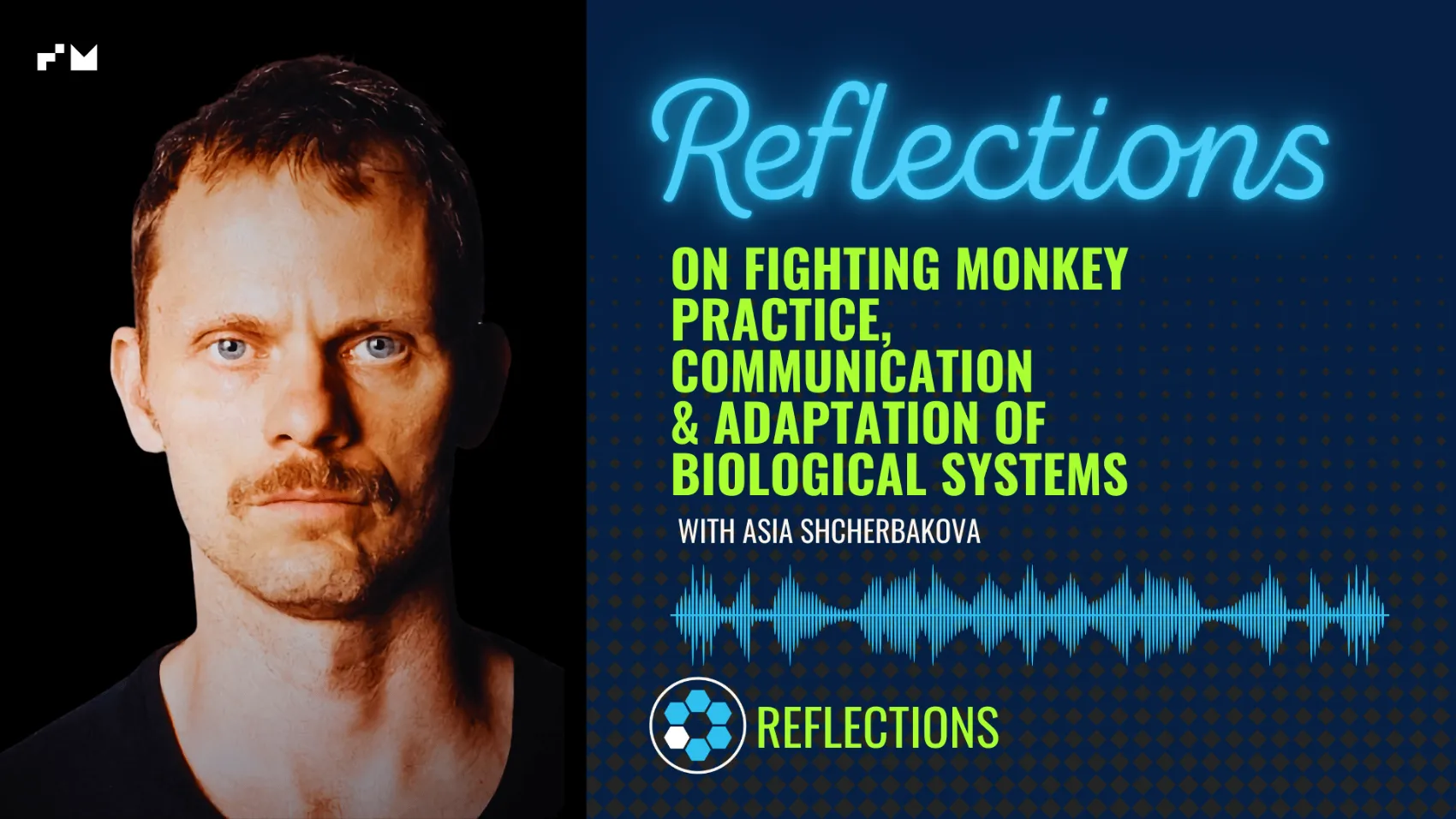After living in the mountainous forests for over a year, I quickly came to the realization that I didn’t dislike rain. What I did not like were the rainy days in a concrete jungle on pavement with gloomy cars passing by. In the forest, rain fills the atmosphere with the sound of tapping leaves and earthy smell, accompanied by mushrooms sprouting soon after. Even though the path on the trail I built is the same path every single day, it is astonishing how different it looks, smells, sounds, feels. During my daily walk down and up the trail, I have come to realize how incredibly subtle, yet persistently consistent change takes place, in the forest in nature, and equally within our everyday lives.
Being a person who wants everything yesterday right this moment, where soon is pretty much now or never, it took me quite a while to come to terms with the fact that change can be initiated intentionally, based on the actions we choose to take. What I see as the essence of behavior change. Having been raised in a family that moved every 2-3 years to different countries, I was always given the opportunity to radically change via external forces. Moving to a new country was a perfect excuse to restart your life from scratch on an empty canvas. The delight was in being able to recreate oneself to any identity you chose to be, because nobody knew you at all. So, in a way, I became dependent on radical change that were externally generated. I learned to lean into it and recreate it myself.
Yet being surrounded by trees for the last year, spending a large portion of the time on my own, I have gradually become much more comfortable with the idea that a change that is less radical can be self-generated from within. And at times, these less radical yet consistent intentions can be far more profound with positive repercussions. With this in mind, I began to explore ways to self-generate behavior change, and nail down the pieces of the puzzle that are foundational to this process.
Scaffolding 1: Action
First and foremost, you want to be able to convert the change into something that is possible, instead of overwhelming. This isn’t about motivation. It’s more about how earnest and compelled you are to change, and to make it realistic. Converting from rumination to making it something you are willing and ready to act one step at a time.
For self-generated change to take place, it helps to deconstruct the change into concrete actions. The action you create needs to be doable, with a good balance of being not too easy that it doesn’t feel like you’re doing anything, versus not too difficult that you become paralyzed. It begins with clarifying the nature of the change, what is needed to attain that change, and make it easy to act upon daily.
You may for instance want to change the course of your career. For this, you may decide to attend a course that specializes in training you to attain this skill/knowledge. Of course, this doesn’t have to be something that is life-altering. I know of many people who have picked up learning a new language or musical instrument during the 2020 pandemic.
Important thing is, whatever change you want to initiate, you convert it into what’s tangible, doable, realistic, and can be compartmentalized in time increments. By doing so, it becomes something you can confirm if it was done or not, and it will also give you the possibility to reduce or increase the amount, depending on the day. Here, a good framework one can reference is that of the SMART (Specific-Measurable-Attainable-Realistic-Timeframe) goals.
Scaffolding 2: Narrative

The final touch I personally like to add, is storytelling, creating a narrative. With the change you have in mind, you begin to build an idea of what kind of person you want to become though it. The process is like newly adding a personality to who you are, by thinking of what aspects of the change makes it more aspiring and appealing for you. Here, it helps to focus on building a positive image of who you want to become, instead of trying to remove the negative traits of what you dislike about yourself.
Often, the image we create and associate ourselves with eventually end up becoming a part of one’s identity. For example, when I shifted from being a vegetarian to an omnivore, the hardest part was letting go of my identity as a vegetarian. By stating I am a vegetarian in Japan in the 90s when the concept of vegetarianism was non-existent, I felt somehow I was making an intentional choice that was unique, progressive, and out of the social norm. So, when I decided to remove that identity suddenly, I realized how attached I was to it.
What kind of person do you want to become? What behaviors does this person embody? Where does this person go? What type of choices will this person make? What will this person be doing to better themselves on a daily basis? What kind of habits/routines will this person have? What are the types of things this person will focus on? Who will be the type of people this person will choose to spend quality time with? Digging these questions in relation to the actions you have created will make the action more precise and associated with a positive image of whom you want to become through this change.
Scaffolding 3: Design

Once the change is broken-down into clear actions and positive narrative, next will be to schedule it into your daily life. You need to design a structure that facilitates the action to take place. You want to create a space where you can be ready and willing to prioritize this action over everything else you do, in a manageable balanced way in relation to your life.
Here, accountability is key. Be it accountability to yourself, or to others, whatever works for you is what is the best. Some people do well by announcing their actions out loud to other people. Others do better by simply making a promise to themselves.
One of the simplest ways to ensure this is to put it into your calendar on a time that is least distracting and most manageable for your lifestyle. It can be 5 minutes every morning, or 15 minutes during lunch time on weekdays, or 30 minutes every weekend. This can be your own private calendar, or a shared calendar with your family, friends or colleagues.
When I used to work in advertising, I would use my 1-hour lunch break to go for a 15-minute swim. By announcing it to my colleagues that I will be doing this every day not only made it a locked-down schedule, but it also created a structure where they became my accountability supporters who will encourage me, as they will say things like “Heading for your daily swim? Good on you and have fun!”.
Scaffolding 4: Experiment

In order to make the change possible, consistency is crucial. Some may have a negative impression of consistency, as it is often what is emphasized when growing up. Here, converting the negative memory/impression of consistency into a positive experience helps, by bringing in the spirit of experimentation. Instead of thinking about your “action” and design” as a daily chore you must do, see it more as an experiment, where you are the subject, and you are the analyst.
As a subject and an analyst, you examine what you are experiencing on a daily basis. Observe what works and what doesn’t. If something works, continue with it. On the other hand, if it doesn’t, instead of seeing it as a failure on your part, welcome it as data that is coming back to you in the form of feedback, look at it, and slightly modify your action and/or design. Note down the modifications you’ve made and continue with the upgraded experiment.
In a way, my morning body weight training routine that is a part of my daily movement practice, is in a constant flux thanks to this. I have originally started with a 3-minute training, and currently it has evolved into an 8–10-minute training. Nevertheless, depending on the day and how I feel, I will modify the duration. When I talk about modification, it is not always about reduction. It may be at times increasing the number of sets or the content of the body weight training itself, based on my condition.
Remember, when you design the structure of your action, it is not about getting it perfect. It is about recording what you have been able to do for that day or week, analyzing the data, and seeing it as an experiment for you to modify and adjust. If 5 minutes every morning didn’t work, perhaps you can reduce the duration to 3 minutes, or alternatively, change the frequency to every other day. The idea is to not reprimand yourself for not being able to take action and instead, to figure out an alternative way to schedule it in.
For this, creating a journal for self-assessment and feedback is one way to approach it. Of course, if you want to keep it simple, an app like Way of Life is very useful in creating an easy way to log your actions and review it on a weekly basis. On the other hand, if you feel that you may want a bit more objectivity and advice, you can also consider talking with a like-minded friend or even a coach/trainer specializing in the field you are working on, who can be a good partner for you to work with.
Scaffolding 5: Space

Finally, as ordinary as it sounds, the environment makes a huge difference. When I say environment, it can be from the people you surround yourselves with, the support you get from them, to the actual physical space you create around you. Informing those close to you who interact with you on a day-to-day basis about your decision to embark on an experiment for behavior change, and even taking one step more to express small actionable things they can do to support your process, can be highly beneficial.
It is also good to keep in mind that there are two types of environments. The environment you cannot personally have any control over (i.e. weather, what your partner thinks), versus the environment you can influence (i.e. what you purchase, actions you take). There are of course gradations in between, and this will be different depending on the person. What’s important is to figure out what it is you can directly have influence over, so you can curate an environment that is more supportive and conducive to you being able to take action.
I have been personally experimenting with a wide range of ways to eat since mid 2000. From vegetarian, vegan, raw food, ketogenic, paleo, time-restricted eating to elimination diet. In all these cases, the first four scaffoldings are essential, though what I have come to realize more and more is that what surrounds me matters.
When there are food items in the house that are outside the list, it becomes harder to resist. When people living with you eat and welcomingly share meals that do not match, it becomes harder to resist. So having an environment that is free of food items you are not eating, and to have understanding/support from those who live with you makes a huge difference. Of course, this will also depend on who you are living with, what kind of dietary restrictions they have, as well as what kind of role you have in relation to them. Nevertheless, trying to find a creative way to shift and influence the space to a more supportive and conducive one in relation to your action, narrative, designed structure, and experiment really helps.
Final Note

Behavior change is subtle, sometimes not even visible. Yet the day-to-day action one takes is what evolves us to be who we are into the future, and what we do here and now is what directs the shift in direction. It’s been a long extensive journey for me to have arrived at this place today, and I will most probably evolve my ideas in years to come, though I am enthusiastic in continuing on with this subtle daily experiment of behavior change for myself and others.
Lastly, I would like to finish this post by introducing two resources that may be of interest for those who want to dig more into behavior change. One is a recently released podcast by Dr. Andrew Huberman on “The Science of Making & Breaking Habits”. He digs deep into the science of habit formation and elimination in relation to the neuroscience of the brain. The other is the book “The Artist’s Way” by Julia Cameron, a book I have been revisiting regularly for the last decade, that allows me to uncover my internal process and directional change I want to initiate in my life.
“Scaffolding” is a temporary structure built outside a building or an artwork, usually made of wooden planks and metal poles, used by workers during the building / repairing / cleaning process. Once the work done to the building or artwork is complete, it will be taken down, exposing the complete architecture of the building or artwork. In this article the word “scaffolding” is intentionally used to bring insight into ways in which one can build a solid foundation for the change one aspires to.












